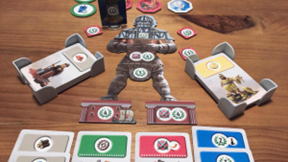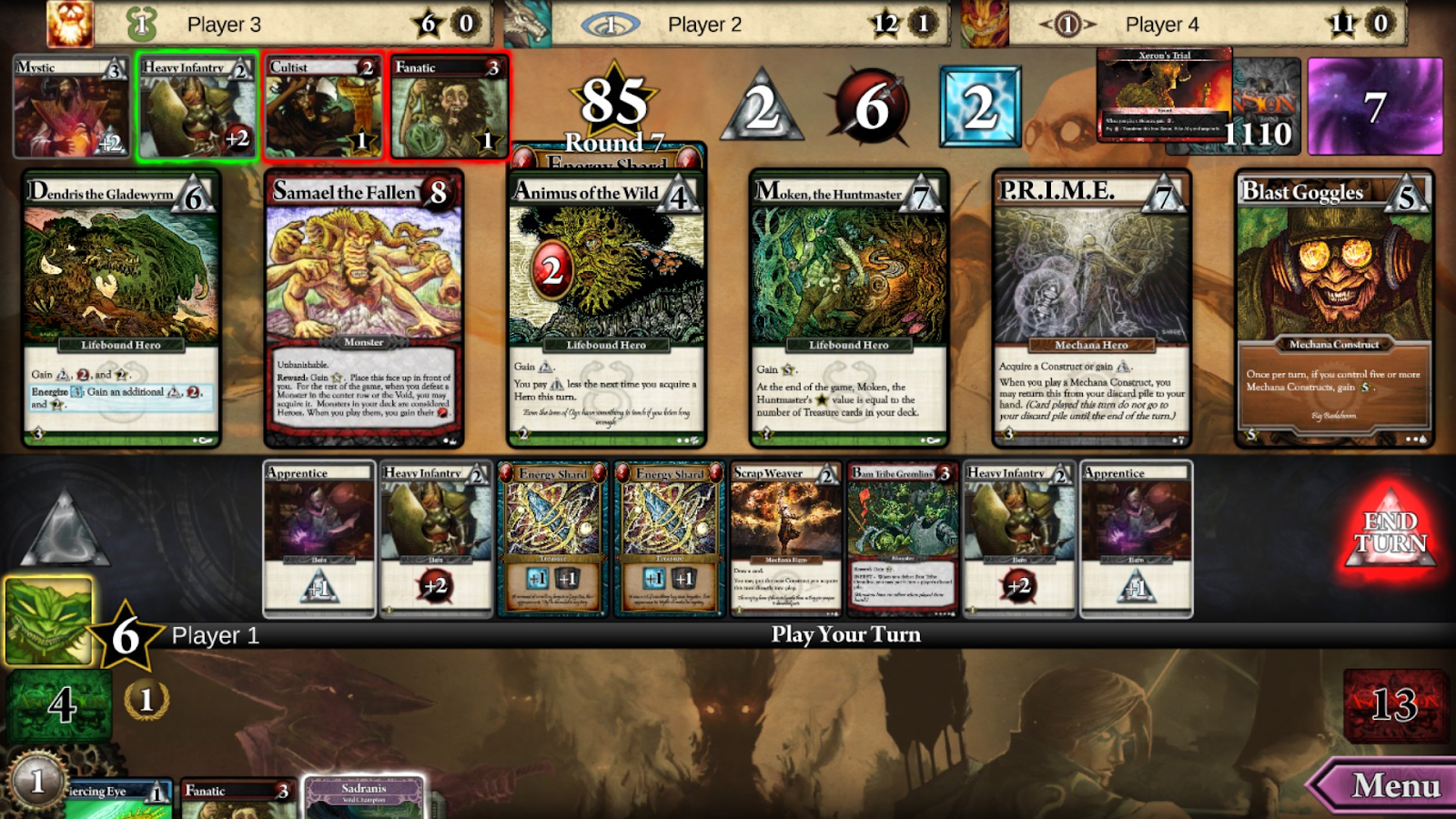If you’re curious about what board games are currently popular, Boardgame Geek is a great resource to check out. They track thousands of games and have several board gamers clocking their plays on the website. While this may not be indicative of the global market, it certainly offers an intriguing snapshot of what is being played and what isn’t.
For November, BGG claims that 18,567 votes were cast on the games featured on their website, with an average of 371 votes per game listed. What’s remarkable about this list is that there are no new titles from 2023. Instead, the games listed mostly span from those published from 2002 to the most recent ones published in 2022. Perhaps things will change in 2024… only time will tell.
Before we dive into BGG’s top ten games for November 2023, I’d like to highlight a game that’s currently ranked 25th on the list. The game is called Wingspan, designed by Elizabeth Hargrave and is currently one of my favourite titles. It was released in 2020 and features ornithologists trying to free birds into three distinct biomes. Players will have to obtain food and eggs to free birds, which they take from the main deck into one of the three biomes. Each card has its own set of rules and actions, which together allow players to gain victory points both on a round-by-round basis and at the end of the game for a total final score.
Now let’s have a look at the top ten most played games as voted for on BGG for November 2023.
Top 10: November 2023
At number 10 we find Star Wars Rebellion, published in 2016. In Star Wars Rebellion, you control the entire galactic empire or the fledgling rebel alliance. You must command starships, account for troop movements, and rally systems to your cause. Each side has different win conditions, and you will need to adjust your play style depending on who you represent. The game features more than 150 plastic miniatures and two game boards that account for 32 of the Star Wars galaxy's most notable star systems. Rebellion is praised for being intensely personal, cinematic, and deeply heroic in scope.
At number 9 we have War
of the Ring: Second Edition initially published in 2012. In War of the
Ring, one player takes control of the free peoples, while the other controls shadow armies. Initially, the free people nations are reluctant to
take arms against Sauron, so they must be attacked by Sauron or persuaded by
Gandalf or other good characters before they engage in open conflict. The game
is dice-driven, but there are sufficient choices and decision-making
opportunities that player actions will tend to mitigate the luck of the draw
and favour more acute strategic choices.
At number 8 we have Gloomhaven: Jaws of the Lion, published in 2020. Jaws of the Lion is a compact, smaller version of the monumental Gloomhaven. It still employs the card-based, dice-less mechanism found in the larger game while also introducing the mercenary outfit called the ‘Jaws of the Lion’. The game is strongly RPG in flavour and execution, with a generous helping of skirmishes and near misses. While it’s not extremely difficult to teach (I even taught my 8-year-old to play it), it might prove harder to master. The trick is to always work as a team, and you need at least 4 players to get the best out of this lovely game.
 At number 7 we find
the impressive and deeply immersive Dune: Imperium, also published
in 2020. This is a competitive game
where players take on one of 6 factions eager to take control over the planet Arrakis,
also known as Dune. Each faction comes with its own skills and abilities. Diplomacy
and renown with specific factions become key towards controlling spice
production and ultimately the overall rulership of the lucrative spice trade.
At number 7 we find
the impressive and deeply immersive Dune: Imperium, also published
in 2020. This is a competitive game
where players take on one of 6 factions eager to take control over the planet Arrakis,
also known as Dune. Each faction comes with its own skills and abilities. Diplomacy
and renown with specific factions become key towards controlling spice
production and ultimately the overall rulership of the lucrative spice trade.At number 6 we have Terraforming
Mars, published in 2016. One of the most eclectic games published in that
year and which gave rise years later to a smaller format, Terraforming Mars:
Ares Expedition. In this game, players compete to establish economic footholds
on the Red Planet while at the same time contributing towards terraforming its
barren landscape. Great table presence and immersive theme make this a beloved
game among aficionados.
 Ranked at number 5, Twilight
Imperium is an oldie but a goodie that still holds its own against the best
of the crop. The game was originally published in 1997 and was given a 4th
edition in 2017. Deemed a grand and expansive space opera, this game unveils a
chaotic universe grappling with the aftermath of the Lazrax empire's
centuries-long disintegration. Players take on the mantles of great leaders
from rising empires vying for military and political control until one player
succeeds in becoming sufficiently dominant to be crowned emperor. This is a
beast of a game that can take up to six hours to resolve (without expansions).
Ranked at number 5, Twilight
Imperium is an oldie but a goodie that still holds its own against the best
of the crop. The game was originally published in 1997 and was given a 4th
edition in 2017. Deemed a grand and expansive space opera, this game unveils a
chaotic universe grappling with the aftermath of the Lazrax empire's
centuries-long disintegration. Players take on the mantles of great leaders
from rising empires vying for military and political control until one player
succeeds in becoming sufficiently dominant to be crowned emperor. This is a
beast of a game that can take up to six hours to resolve (without expansions).At number 4 we have the Zoo building simulation, Ark Nova. This game first published in 2021, allows you as a player to plan and design a modern, scientifically managed zoo. All this to own the most successful zoological establishment. To do so, you will build enclosures, accommodate animals, and support conservation projects all over the world. Theme and artwork as spot on, and while it comes with several components, it is straightforward to teach to consummate board gamers.
Ranked at number 3 we
find the big box board game “Gloomhaven”. This game can be considered the big brother of
“Jaws of the Lion” (featured earlier at number 8) and was first published in
2017. This is a tactical combat game where players take on the role of
wandering adventurers, banding together to clear out dungeons and mysterious
ruins. In the process, players will level up their in-game characters, gain
loot, discover new locations, and expand a tale fuelled by their own decisions.
Gloomhaven offers a campaign setting that would need to be settled over several
long sessions. This is a game made by gamers for gamers, and unless you have a
dedicated board gaming group, I would not recommend indulging in this colossal
offering.
Brass Birmingham has taken the #1 spot for November 2023. With 20 awards under its belt, this game, originally published in 2018, can be considered a heavyweight in the board gaming world. Designed by Mark Wallace, it’s an economic strategy game that tells the story of competing entrepreneurs in Birmingham during the Industrial Revolution. The game has been praised for its deep, strategic gameplay, beautiful thematically consistent artwork, and replayability. The game and player boards are of superb quality, and the poker chips add extra flair to the gameplay.
Notable mentions
Before closing this
foray into what board game players were playing this November, I’d like to
mention three noteworthy titles that are currently rising fast as gamer favourites.
Dune: Uprising is a standalone spinoff to Dune: Imperium
that expands on that game's blend of deckbuilding and worker placement while
introducing a new six-player mode that pits two teams against one another in
the biggest struggle yet.
Mycelia is a deck-building game designed by Daniel Greiner and published by Ravensburger in 2023. The game is set in a magical forest where players take on the role of creatures, carrying dewdrops to sacred temples amidst their fields, all along trying to be the first to finish their field.
The game has been
praised for its easy-to-learn deck-building mechanics, quick pace, and
replayability. It has also been updated with new expansions that add more depth
to the economic engines each player has to build. It has colourful and
whimsical artwork that is thematically consistent with the game’s setting. The
game’s easy-to-learn mechanics and fast pace make it a great choice for both
beginners and experienced players alike.
Heat: Pedal to the
Metal is a racing board game
that has been designed by Asger Harding Granerud and Daniel Skjold Pedersen and
published by Days of Wonder. The game is for 1 to 6 players and takes about 30
to 60 minutes to play. The exceptional card system designed by Asger Granerud
and Daniel Pederson comes across as a revision of their previous hit bicycle
racing title, Flamme Rouge 2. The game has been praised for its innovative
mechanics, fast pace, and replayability.
Thank you for joining
me in this special board game review. I hope you found the reviews informative
and helpful. The board games that were the hottest and most played in November
2023 included Brass Birmingham, Pandemic Legacy: Season 1, and Gloomhaven.
The board game
industry is constantly evolving, and new games are released all the time.
Therefore, I will be uploading another edition of this special board games
review next year in June. Be sure to come back and join me once again to find
out which games are the hottest and most played at that time.
Until then, happy
gaming!
- Brass Birmingham
- Pandemic Legacy: Season 1
- Gloomhaven
- Ark Nova
- Twilight Imperium
- Terraforming Mars
- Dune: Imperium
- Gloomhaven: Jaws of the Lion
- War of the Ring: Second Edition
- Star Wars Rebellion













































